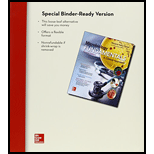
a.
To explain:
The comparison and contrast between passive and active forms of transport, using examples of what is being transported and the requirements for each.
Introduction:
The active transport uses cellular movement of molecules across the cell membrane. It involves processes such as endocytosis and exocytosis. Passive transport involves the movement of molecules across the cell membrane without using cellular energy. It involves processes such as osmosis and diffusion.
a.
Explanation of Solution
The cells obtain ions and molecules from their extracellular fluid. The active and passive transport is the movement of molecules across the cell membrane that allows the uptake and release of molecules to and from the cells. The comparison between active and passive transport is given in the following table:
| Passive transport | Active transport |
|
In this type of transport, the movement of molecules across the membranes occurs by diffusion along the concentration gradient. It includes facilitated diffusion, and simple diffusion. (High to low concentration). |
In this type of transport, the movement of molecules across the cell membranes, against the concentration gradient is facilitated by the expense of energy by the cell. It includes pumps, group translocation, and endocytosis. (Low to high concentration). |
| No energy is required to complete the process | Energy (ATP) is required to complete the process |
| Walter, ethanol, and gases such as carbon dioxide, nitrogen, and oxygen are transported by passive transport. | Sodium and potassium ion are transported through active transport mechanism. |
b.
To determine:
The similarity between phagocytosis and pinocytosis.
Introduction:
Endocytosis is a process in which the cells utilize energy for the intake of certain big-sized molecules from outside of the cell. Such molecules are caught by the plasma membrane, and are then transported to the cell in vesicles present in the cell. On the basis of the mode of acquiring these particles, endocytosis can occur as pinocytosis and phagocytosis.
b.
Explanation of Solution
Endocytosis is the process in which molecules are engulfed inside a cell via vesicle formation. Endocytosis is of three types: phagocytosis, pinocytosis, and receptor-mediated endocytosis.
Phagocytosis: Phagocytosis refers to process that refers to the killing of cells. Phagocytosis is performed by specialized phagocytic cells, called as phagocytes. When a foreign particle or microbe enters in the blood system the phagocytes perform phagocytosis. Phagocytosis is performed by phagocytes also called as defense cells in the body. It is also known as cellular eating and involves intake of large particles by cell.
Pinocytosis: In this process, a tiny part of the plasma membrane dents inwards and gets surrounded by the interstitial fluid. This dent then turns into a vacuole inside the cell, with a trapped droplet of interstitial fluid. Therefore, the concentration of the particles acquired by the cell is the same as that of the interstitial fluid. It is also known as cellular drinking and involves intake of liquid and very small particles by the cell.
Phagocytosis and pinocytosis are both active modes of transport through which molecules transfer across the plasma membrane.
To determine:
The difference between phagocytosis and pinocytosis.
Introduction:
Active processes of membrane transport use cellular energy in the form of adenosine triphosphate (ATP) for the movement of molecules across the cell membrane against the concentration gradient.
Explanation of Solution
The difference between phagocytosis and pinocytosis is given in the following table:
| Pinocytosis | Phagocytosis |
| The process is also termed as cellular drinking. | The process is also known as cellular eating. |
| It is a process in which a cell takes in the liquid droplets across the cell membrane by forming pinosomes. | It is a process in which a cell takes in large solid matter across the cell membrane by forming phagosomes. |
| The ingest liquid are ready for absorption. | The ingested matter is broken down into simple molecules before absorption. |
| The process involves an invagination process for taking up the liquid by an organism or cell. | The process involves the formation of pseudopodia for engulfment of food by organism or cell. |
Want to see more full solutions like this?
Chapter 6 Solutions
Loose Leaf For Microbiology Fundamentals: A Clinical Approach
 Human Anatomy & Physiology (11th Edition)BiologyISBN:9780134580999Author:Elaine N. Marieb, Katja N. HoehnPublisher:PEARSON
Human Anatomy & Physiology (11th Edition)BiologyISBN:9780134580999Author:Elaine N. Marieb, Katja N. HoehnPublisher:PEARSON Biology 2eBiologyISBN:9781947172517Author:Matthew Douglas, Jung Choi, Mary Ann ClarkPublisher:OpenStax
Biology 2eBiologyISBN:9781947172517Author:Matthew Douglas, Jung Choi, Mary Ann ClarkPublisher:OpenStax Anatomy & PhysiologyBiologyISBN:9781259398629Author:McKinley, Michael P., O'loughlin, Valerie Dean, Bidle, Theresa StouterPublisher:Mcgraw Hill Education,
Anatomy & PhysiologyBiologyISBN:9781259398629Author:McKinley, Michael P., O'loughlin, Valerie Dean, Bidle, Theresa StouterPublisher:Mcgraw Hill Education, Molecular Biology of the Cell (Sixth Edition)BiologyISBN:9780815344322Author:Bruce Alberts, Alexander D. Johnson, Julian Lewis, David Morgan, Martin Raff, Keith Roberts, Peter WalterPublisher:W. W. Norton & Company
Molecular Biology of the Cell (Sixth Edition)BiologyISBN:9780815344322Author:Bruce Alberts, Alexander D. Johnson, Julian Lewis, David Morgan, Martin Raff, Keith Roberts, Peter WalterPublisher:W. W. Norton & Company Laboratory Manual For Human Anatomy & PhysiologyBiologyISBN:9781260159363Author:Martin, Terry R., Prentice-craver, CynthiaPublisher:McGraw-Hill Publishing Co.
Laboratory Manual For Human Anatomy & PhysiologyBiologyISBN:9781260159363Author:Martin, Terry R., Prentice-craver, CynthiaPublisher:McGraw-Hill Publishing Co. Inquiry Into Life (16th Edition)BiologyISBN:9781260231700Author:Sylvia S. Mader, Michael WindelspechtPublisher:McGraw Hill Education
Inquiry Into Life (16th Edition)BiologyISBN:9781260231700Author:Sylvia S. Mader, Michael WindelspechtPublisher:McGraw Hill Education





